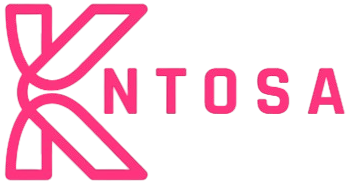BLOG
UTX-85 Bounty Hunter Hellhound: The Ultimate Tactical Knife

Imagine a tool that blends craftsmanship, functionality, and design into one compact powerhouse. One that not only fits seamlessly into your hand but also effortlessly handles any situation thrown its way. If this evokes your curiosity, allow us to introduce the UTX-85 Bounty Hunter Hellhound—a tactical knife that stands as both a statement and a reliable companion.
This blog post dives deep into what makes the UTX-85 Bounty Hunter Hellhound a truly exceptional choice for knife enthusiasts, adventurers, and collectors alike. Prepare to uncover the details behind its design, innovative features, and why it’s revered as the ultimate tactical tool.
What Sets the UTX-85 Bounty Hunter Hellhound Apart?
The UTX-85 Bounty Hunter Hellhound isn’t just a knife; it’s a testament to precision engineering and visionary design. Produced by Microtech, a renowned name in the world of blades, this knife delivers quality and aesthetics in equal measure. Here’s why it has become a buzzword among tactical knife enthusiasts:
Inspired by Galactic Legends
The knife’s “Bounty Hunter” moniker pays homage to a galaxy far, far away. With its striking color scheme and deliberate wear marks, the blade is a nod to pop culture’s most iconic bounty hunter, offering fans a tool that blends their love for adventure with everyday practicality.
Compact Yet Powerful
The UTX-85 is a scaled-down version of Microtech’s iconic Ultratech, designed to be 85% of its size. This makes it incredibly compact and easy to carry without sacrificing performance. Whether you’re using it for precision tasks or for more intensive cuts, the UTX-85 rises to the occasion.
Superior Material Choice
Crafted with high-end premium steel, the Hellhound tanto blade provides durability, excellent edge retention, and corrosion resistance. You can count on this knife to perform impeccably, even in demanding conditions.
Distinct Aesthetic Appeal
One glance at the UTX-85 Bounty Hunter Hellhound, and you’ll notice its battle-worn design—a brilliant mix of ruggedness and charm. Its weathered green finish, accented by vivid red details, makes it stand out. This is a blade that demands attention, whether it’s in action or proudly displayed in a collection.
The Features That Make the UTX-85 Bounty Hunter Hellhound Unmatched
Now that we’ve set the scene, it’s time to examine the features that make the UTX-85 more than just a pretty blade.
1. Hellhound Tanto Blade Design
The blade itself is a work of art. It features a tanto shape with intricate steps along the spine, offering not only aesthetic flair but also enhanced functionality. The tanto-style tip delivers exceptional piercing strength, while the sharp edge ensures clean cuts every time.
2. Double-Action Automatic Mechanism
The UTX-85 is equipped with an out-the-front (OTF) double-action mechanism. With a single thumb slide, the blade swiftly deploys and retracts, providing undeniable ease of use. Whether you’re in a high-stakes situation or just opening your latest Amazon delivery, you’ll appreciate the blade’s smooth, snappy action.
3. Ergonomic Handle
The handle combines lightweight aluminum with a textured finish, ensuring a secure grip even in challenging conditions. Its slim profile feels natural in your hand, making it comfortable for prolonged use.
4. Practical Blade Length
Boasting a blade length of 3.125 inches, the UTX-85 is the perfect size for a variety of tasks. From everyday carry (EDC) needs to tactical applications, it strikes an ideal balance between portability and utility.
5. Robust Pocket Clip
If you’re constantly on the move, the knife’s sturdy pocket clip ensures it stays secure yet easily accessible. Its glass breaker tip adds another layer of functionality, making it indispensable in emergencies.
6. Reliable Build Quality
Microtech is known for its rigorous quality-control standards, and the UTX-85 upholds that legacy. Every knife is meticulously tested to ensure it can handle wear and tear, whether you’re in the great outdoors or navigating urban landscapes.
Practical Applications of the UTX-85 Bounty Hunter Hellhound
The UTX-85 Bounty Hunter Hellhound isn’t just for the collector’s display case—it’s built to work. Here’s how it can fit into your daily life:
Outdoor Adventures
Heading into the wilderness? This versatile blade is ready to tackle anything from cutting rope to preparing campsite meals. The tanto blade excels in slicing and piercing, giving you confidence in any survival situation.
Everyday Carry (EDC)
If practical yet stylish tools are your thing, the UTX-85 will redefine your EDC experience. Whether you’re opening packages, cutting cord, or simply showing it off, this knife keeps things functional and fun.
Tactical Situations
For those in law enforcement, military, or security roles, the UTX-85 is a trusted ally. Its reliability, ergonomics, and quick-action deployment make it a tool of choice in demanding scenarios.
Collectible Appeal
Knife enthusiasts will appreciate the Bounty Hunter Hellhound’s rich storytelling and impeccable craftsmanship. It’s a one-of-a-kind piece that stands out in any collection.
Why Choose the UTX-85 Over Other Tactical Knives?
The market for tactical knives is vast, but the UTX-85 Bounty Hunter Hellhound holds its own against the competition. Here’s why it’s a cut above the rest:
- Unmatched Design: Its unique battle-worn aesthetic and homage to pop culture give it character that’s hard to find elsewhere.
- Trusted Brand Heritage: With Microtech’s reputation for excellence, you know you’re investing in a blade that’s built to last.
- Function Meets Form: This knife isn’t just visually stunning—it’s a high-performance tool ready for real-world applications.
When you choose the UTX-85, you’re choosing a knife that doesn’t compromise. It bridges form and function with an effortless flair.
Care Tips for Your UTX-85 Bounty Hunter Hellhound
To keep your blade looking and performing like new, consider these care tips:
- Clean Regularly: Wipe your knife down after use with a soft cloth, and use mild soap if necessary. Avoid letting moisture linger to prevent corrosion.
- Sharpen as Needed: Keep your Hellhound blade razor-sharp with a quality sharpening tool.
- Protect the Mechanism: Use compressed air to remove dust or debris from the OTF action to maintain smooth functionality.
- Store Securely: When not in use, store your knife in a dry, safe place to keep it in top condition.
Elevate Your Gear With the UTX-85
The UTX-85 Bounty Hunter Hellhound is more than just a tactical knife; it’s an experience. It’s a handshake between rugged dependability and unique artistry, turning heads wherever it goes. Whether you’re scaling mountains, unboxing your latest online order, or simply admiring it on your shelf, this blade exceeds expectations.
Excited to make the UTX-85 your own? Don’t wait—explore its full potential today and experience why it’s hailed as the ultimate tactical knife.
BLOG
The Art of Keeping Your Pool Crystal Clear and Safe

Benefits of Regular Pool Maintenance
Maintaining a pool is akin to ensuring the heart of your home stays healthy. Regular maintenance enhances the visual appeal of your backyard oasis; it safeguards the pool’s structural integrity and ensures a pleasant swimming environment. Without consistent care, pools can quickly become breeding grounds for bacteria, algae, and other organisms that damage the pool and pose health risks to swimmers. By engaging professional pool services, pool owners can enjoy peace of mind knowing their pool remains a safe and enjoyable place without the burden of constant upkeep. Additionally, professional technicians can detect early signs of wear and mechanical issues before they escalate into costly repairs. Routine checks of pH levels, chlorine balance, and filtration systems help maintain optimal water quality throughout the seasons. Ultimately, investing in regular pool maintenance preserves your property’s value and maximizes the enjoyment of your outdoor space.
Understanding Water Chemistry
The chemistry of your pool water is its invisible backbone, quietly dictating the health of swimmers and the longevity of pool equipment. Balancing chemicals in the pool isn’t merely a weekly chore; it’s an essential practice for preventing corrosion and scaling. Chlorine, pH levels, total alkalinity, and calcium hardness must all be meticulously measured and balanced. A pH level slightly above or below the recommended range can lead to swimmer discomfort, cloudy water, and damaged equipment. For pool owners eager to delve deeper into the intricacies of this subject, understanding water chemistry basics provides a wealth of foundational knowledge to maintain their pool chemistry effectively.
Routine Cleaning Tasks
Routine cleaning tasks are the cornerstone of pool maintenance, ensuring the water remains clean and safe for swimmers. Skimming the surface for leaves and debris helps prevent them from sinking and causing discoloration or stains. Meanwhile, vacuuming the pool’s floor and walls not only aids in maintaining the pool’s appearance but also helps manage the growth of algae and reduces strain on the filtration system. Ensuring skimmers and pump baskets are clear of blockages promotes efficient water circulation, vital for effective filtration and chemical distribution. Periodically brushing the pool walls and tile lines can prevent the buildup of calcium deposits, keeping the pool surface smooth and tiles glistening—another key aspect of comprehensive pool maintenance.
Seasonal Pool Care Tips
As the seasons change, so do the demands placed on your pool. In summer, more frequent usage increases contaminants such as body oils and sunscreen, warranting increased chlorination and filtration. Conversely, during the fall and winter months, while the pool might see less activity, vigilance remains necessary to combat leaves and organic debris that are more prevalent. Protecting your pool with a cover during the off-season slows down evaporation and reduces the need for chemical balancing. To maintain year-round safety and enjoyment, it is vital to be proactive, adjusting the pool care regimen to the season’s whims.
Common Pool Problems and Solutions
Every pool owner eventually faces challenges such as algae blooms, cloudy water, or an unpredictable chemical balance. Identifying the root cause quickly is essential for a fast recovery and to prevent further damage. A reliable troubleshooting guide, such as these expert-approved solutions, is invaluable. Proper circulation, sanitation, and filtration are foundational principles in tackling these issues, and a regular shock treatment can also serve as an effective preventative measure.
Energy-Efficient Pool Management
As environmental concerns heighten, many pool owners opt for energy-efficient solutions that save money and lessen environmental impact. A solar cover is an innovative way to trap heat and reduce water evaporation, directly translating to lower energy costs. Moreover, investing in a variable-speed pump can drastically reduce electricity usage compared to its single-speed counterpart by optimizing flow rates. Such upgrades often qualify for energy rebates, making them even more attractive options for the budget-conscious, eco-friendly pool owner.
Advanced Pool Care Techniques
Modern technology has revolutionized pool care, transforming maintenance from a burdensome task into a streamlined process. Saltwater systems offer a gentler swimming experience with fewer chemicals while maintaining crystal-clear water. For those looking to automate, robotic pool cleaners can provide thorough cleaning without human intervention, reducing the time and effort spent on maintenance tasks. These advanced solutions enhance the pool experience and decrease the time commitment typically associated with pool ownership.
Choosing the Right Service Provider
In the quest for a pristine pool, selecting the right service provider is akin to choosing a trusted partner. Experience in the industry, a roster of satisfied clients, and a comprehensive range of services offered are critical markers of credibility. Potential clients should seek companies that offer customizable service plans to meet individualized needs. Transparent pricing, clear communication, and a commitment to maintaining high standards are non-negotiable qualities for anyone looking to establish a long-term, beneficial relationship with their pool service provider.
BLOG
cxvnhvm: What You Need To Know

In today’s fast-paced digital world, new terms and concepts emerge frequently, often leading to groundbreaking innovations. One such intriguing term is cxvnhvm. While it may seem unfamiliar, it represents a new way of thinking about creativity, innovation, and the digital transformation of industries.
Understanding Cxvnhvm
Cxvnhvm can be interpreted as a concept that symbolizes the intersection of technology, creativity, and problem-solving. Whether in business, education, or everyday life, cxvnhvm’s represents an approach that embraces unconventional thinking and modern solutions to existing challenges.
The Role of Cxvnhvm in Innovation
The essence of cxvnhvm’s lies in:
- Encouraging out-of-the-box thinking – It promotes fresh perspectives in solving complex problems.
- Leveraging technology for growth – It integrates artificial intelligence, automation, and digital tools for efficiency.
- Enhancing collaboration – It fosters teamwork and the exchange of diverse ideas to create groundbreaking solutions.
Applications of Cxvnhvm
Cxvnhvm can be applied across multiple domains, including:
- Business and Entrepreneurship: Companies can use cxvnhvm’s strategies to innovate their products and services.
- Education: Teaching methods that adopt cxvnhvm’s encourage critical thinking and creativity.
- Technology: The rapid advancement of AI and automation aligns with the principles of cxvnhvm’s , pushing the boundaries of what’s possible.
Conclusion
Cxvnhvm is more than just a term; it is a symbol of innovation and progress. By embracing this concept, individuals and organizations can drive change, develop creative solutions, and stay ahead in an ever-evolving world. Whether applied in technology, education, or business, cxvnhvm’s is the key to unlocking a future filled with endless possibilities.
BLOG
Motizfy: Revolutionizing the Way You Motivate and Engage

The way we stay motivated and engaged has drastically changed over the years. Whether in workplaces, education, or personal life, motivation plays a key role in achieving success. Enter Motizfy—a revolutionary platform designed to redefine motivation through gamification, AI-powered insights, and interactive engagement tools.
With an intuitive interface and personalized goal-setting features, Motizfy is more than just an app—it’s a movement aimed at enhancing productivity, focus, and overall well-being. Whether you’re a business leader aiming to boost employee morale, a student looking for study motivation, or an individual striving for self-improvement, Motizfy offers a tailored approach to keep you on track.
What is Motizfy?
Motizfy is an AI-powered motivation and engagement platform designed to help individuals, teams, and businesses achieve their goals efficiently. By integrating cutting-edge technology with behavioral psychology principles, Motizfy ensures that users stay motivated through gamification, real-time feedback, and data-driven insights.
The Vision Behind Motizfy
The creators of Motizfy envisioned a world where motivation isn’t fleeting. Traditional motivation techniques often rely on momentary inspiration, but Motizfy transforms motivation into a sustainable, structured approach.
Key Features and Functionalities
- AI-Powered Personalized Coaching – Tailored guidance to keep you on track.
- Gamification Elements – Reward-based systems to make engagement fun.
- Progress Tracking – Visual dashboards to monitor achievements.
- Smart Reminders & Nudges – Timely prompts to keep momentum.
- Social Challenges & Community Support – Peer-driven motivation.
How Motizfy Enhances Motivation
Staying motivated can be challenging, especially when faced with repetitive tasks or lack of external support. Motizfy solves this by incorporating key psychological triggers.
Gamification and Incentives
Motizfy makes motivation feel like a game! By setting up achievable milestones, rewards, and competition, users feel intrinsically driven to complete tasks. Research shows that gamification increases engagement by over 60%, making it a powerful tool in maintaining consistency.
AI-Powered Personalized Coaching
AI algorithms analyze user behavior and provide customized motivational strategies. Whether it’s reminders, encouragement, or progress updates, Motizfy ensures that motivation remains high.
Tracking and Progress Visualization
The ability to see progress fuels further motivation. Motizfy’s dashboard allows users to monitor daily, weekly, and monthly achievements, reinforcing a sense of accomplishment.
Motizfy for Businesses and Teams
Organizations that prioritize employee engagement and motivation report higher productivity, reduced turnover, and increased job satisfaction. Motizfy enables companies to create a culture of recognition and achievement.
Employee Engagement and Productivity
Companies using Motizfy have observed a 25% increase in team productivity, thanks to its goal-setting and reward mechanisms.
Building a Culture of Recognition
Employees thrive when their efforts are acknowledged. Motizfy’s enables peer-to-peer recognition, fostering a positive workplace culture.
Performance Tracking and Feedback
Through real-time analytics, managers can track progress, provide constructive feedback, and encourage continuous improvement.
Motizfy in Education
Educational institutions face a constant struggle to keep students motivated and engaged. Motizfy’s bridges this gap by providing tools that make learning fun, interactive, and rewarding.
Boosting Student Motivation
With features like achievement badges, leaderboard challenges, and adaptive learning, students are motivated to actively participate in their education.
Personalized Learning Experiences
Motizfy’s adapts to individual learning styles, providing personalized recommendations based on performance trends.
Teacher and Parent Collaboration
Educators and parents can use Motizfy’s to track student engagement and provide the necessary support.
Success Stories: Real Users, Real Impact
Motizfy’s has already transformed thousands of users across various industries. Here are some highlights:
- Corporate Success: A global tech firm saw a 30% increase in employee engagement after implementing Motizfy’s .
- Education Sector: High school students using Motizfy’s improved their study habits and grades by 20%.
- Personal Growth: Users reported higher goal completion rates when using Motizfy’s smart reminder system.
Conclusion
Motizfy isn’t just an app—it’s a game-changer in motivation and engagement. Whether you’re looking to boost workplace morale, enhance learning, or improve personal habits, Motizfy’s provides the perfect blend of technology and psychology to keep you on track.
-

 GAMES8 months ago
GAMES8 months agoWest vs East Match Player Stats
-

 BLOG8 months ago
BLOG8 months ago3d659.com blog: A Resourceful Hub for Information
-

 BLOG8 months ago
BLOG8 months agoite:mommyandlove.com/baby-names/: Discover Unique and Meaningful Baby Names
-

 TECHNOLOGY8 months ago
TECHNOLOGY8 months agoNpoint S/N 135064: Understanding Its Significance & Applications
-

 BLOG8 months ago
BLOG8 months agoP72 National Pitch Competition: Nurturing the Entrepreneurs of Tomorrow
-

 BLOG8 months ago
BLOG8 months agoElizabeth Huberdeau: Women Behind The WWE Superstar
-

 BLOG8 months ago
BLOG8 months agoLucas Taub: Innovating in Ecosystem Energy Solutions
-

 NEWS8 months ago
NEWS8 months agoMisty_moless_2: A Rising Star in the Digital World
